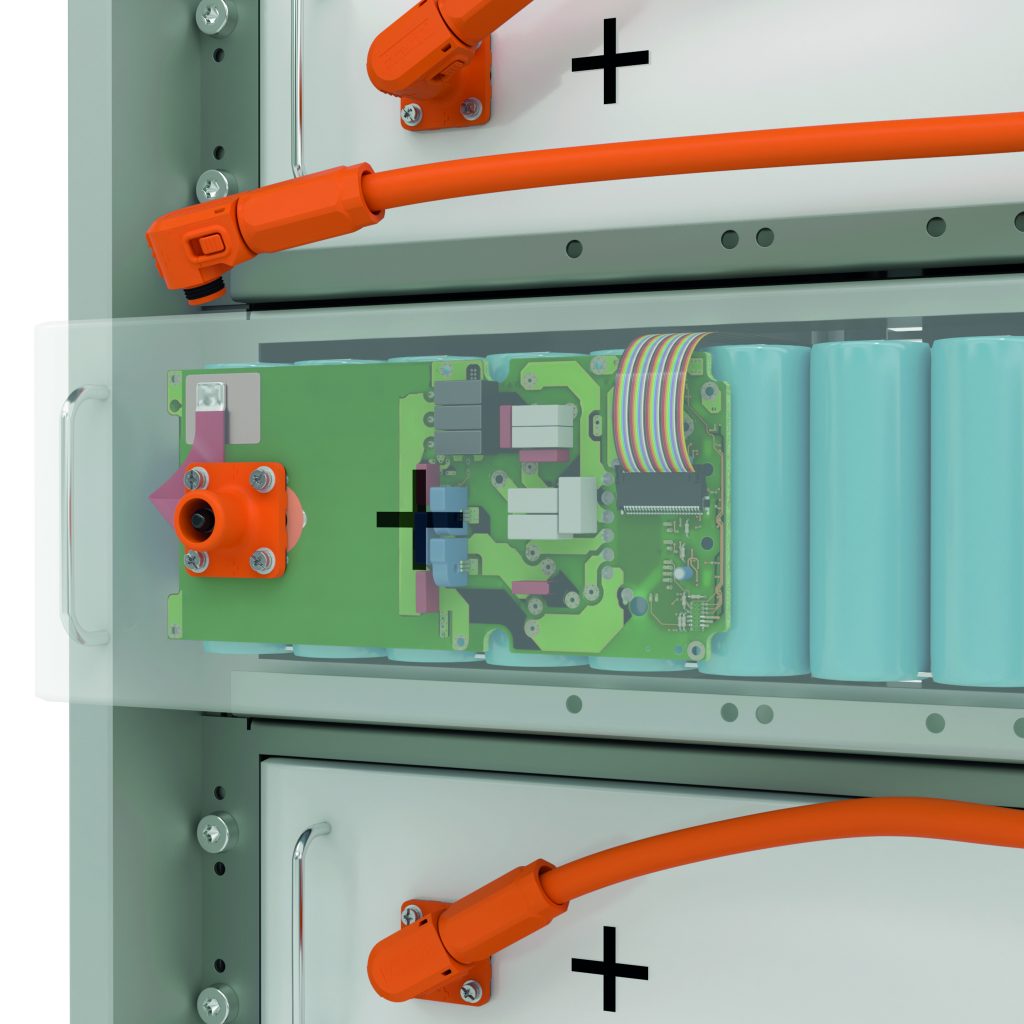Energy storage systems are key to an All Electric Society. Ensuring a stable energy supply by compensating for the volatility of renewable energy sources. This report looks at the typical design of a battery system storage system. Furthermore, exploring the flow of energy and information between the various components. Discover how electrical connection technology can ensure reliable storage systems and support a successful transition to an All Electric Society.
Typical energy storage system design

Electric energy storage systems based on galvanic batteries can be applied to a variety of sizes, from multi-megawatt-hour systems to small home systems of 10 kilowatt-hours. Battery cells are connected in parallel or series to form packs, and welding technologies are used to create permanent electrical connections. This modular design is adjustable and has only a few limitations.
The battery module

Storage modules house large numbers of cells and are monitored and controlled by a Battery Management System. The BMS measures and sets the voltage and current of cell groups for uniform charging/discharging (balancing), and provides power and data connections from the BMS PCBs to the module housing (usually with screw connections for power and plug-in concept for data).
Connecting battery modules together in a rack
Batteries connected in series and housed in racks to produce higher system voltages. Flexible cables with ring cable lugs are used between the modules and a controller is added as an additional module. This controller – called the rack BMS – has power and data connections to the modules. External interfaces, which are routed back internally to various PCBs. To ensure the system functions properly, the installer must attach all cables correctly.
The energy storage system
Energy storage systems, made up of several storage racks connected together. With their own controller for controlling charging/discharging processes and communicating with the outside world. These systems also include air-conditioning equipment, fire sensors, and firefighting equipment, all inside containers with suitable control cabinets. To make the efficient use of these systems possible, there needs to be a multitude of electrical connections. Including power flows, digital connections to the grid, solar and wind turbines, and large-scale loads that can give feedback.
Potential connection technology errors and their consequences

The use of connection technology can lead to potential errors, but their number is manageable. Quality of components, design, suitability for the application, and user qualification are key factors that determine the likelihood of errors. A suitable design of the device is essential to avoid malfunctions in complex electronic systems, such as proper dimensioning of connection technology, considering environmental requirements and protection degree. Moisture affects electrical connections and IP-protected connectors may help to prevent corrosion. Threaded bolts and nuts used in ring cable lugs often cause power connection failures due to increased contact resistances due to vibration or improper tightening, which in the worst case can lead to fire and destruction of the system.
Cost optimization
The worst thing that can happen to an energy storage system is failure or destruction due to an error. This causes significant damage to the owner and everyone involved. However, suboptimal designs or system states can lead to hidden costs that are usually easily avoided.
Even well-designed external power connectors of a battery module can cause significant energy loss over time. Especially if there are poor connections that go unnoticed. The losses can lead to financial losses of several hundred euros per module. Choosing higher-quality connectors may be a wise investment to prevent these losses.
When manufacturing a storage system, it is important to consider the effort needed for the process. One way to save time and cost is by replacing a soldered sensor connection with a spring clip. Furthermore, allowing the automated positioning of sensors during assembly and the manual insertion of sensor lines without tools. The improved accessibility results in significant time savings and cost benefits.
Find out more about the new standards on our webpage.

